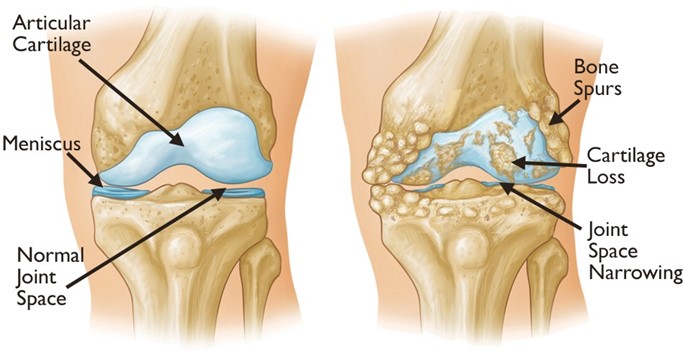A nurse in a clinic is collecting data from an older adult client who has a new diagnosis of osteoarthritis. Which of the following medications should the nurse anticipate the provider will initially prescribe to the client?
Hyaluronic acid
Ibuprofen
Acetaminophen
Celecoxib
The Correct Answer is C
The nurse should anticipate that the provider will initially prescribe acetaminophen to the client who has a new diagnosis of osteoarthritis. Acetaminophen (Tylenol, others) has been shown to help some people with osteoarthritis who have mild to moderate pain². It is often used as a first-line treatment for osteoarthritis pain.
a. Hyaluronic acid is not typically the first medication prescribed for osteoarthritis.
b. Ibuprofen may be prescribed for osteoarthritis but is not typically the first medication prescribed.
d. Celecoxib may be prescribed for osteoarthritis but is not typically the first medication prescribed.

Nursing Test Bank
Naxlex Comprehensive Predictor Exams
Related Questions
Correct Answer is A
Explanation
The first action the nurse should take is to test the drainage for glucose. Clear drainage from the nose following a basal skull fracture could indicate a cerebrospinal fluid (CSF) leak. CSF contains glucose, so testing the drainage for glucose can help determine if it is CSF.
b. Taking the client's temperature is not the first action the nurse should take.
c. Notifying the charge nurse is important but not the first action the nurse should take.
d. Placing a dressing under the client's nose is not the first action the nurse should take.
Correct Answer is D
Explanation
a. Auscultation of lungs revealing wheezing is not related to venous return in the affected arm. Wheezing is
a high-pitched whistling sound made while breathing and is usually a sign of a respiratory problem.
b.A bounding distal pulse indicates strong arterial blood flow, which is not a sign of impaired venous return. Impaired venous return would more likely result in a weak or absent pulse.
c. Fever could indicate infection but is not specific to impaired venous return. It's a systemic sign that may or may not be related to the cast or the fracture.
d. Pain that is unrelieved by opioid analgesics can be a sign of compartment syndrome, which is a serious complication that can result from impaired venous return and increased pressure within the muscle compartments. This requires immediate medical attention to prevent permanent damage.
Whether you are a student looking to ace your exams or a practicing nurse seeking to enhance your expertise , our nursing education contents will empower you with the confidence and competence to make a difference in the lives of patients and become a respected leader in the healthcare field.
Visit Naxlex, invest in your future and unlock endless possibilities with our unparalleled nursing education contents today
Report Wrong Answer on the Current Question
Do you disagree with the answer? If yes, what is your expected answer? Explain.
Kindly be descriptive with the issue you are facing.
